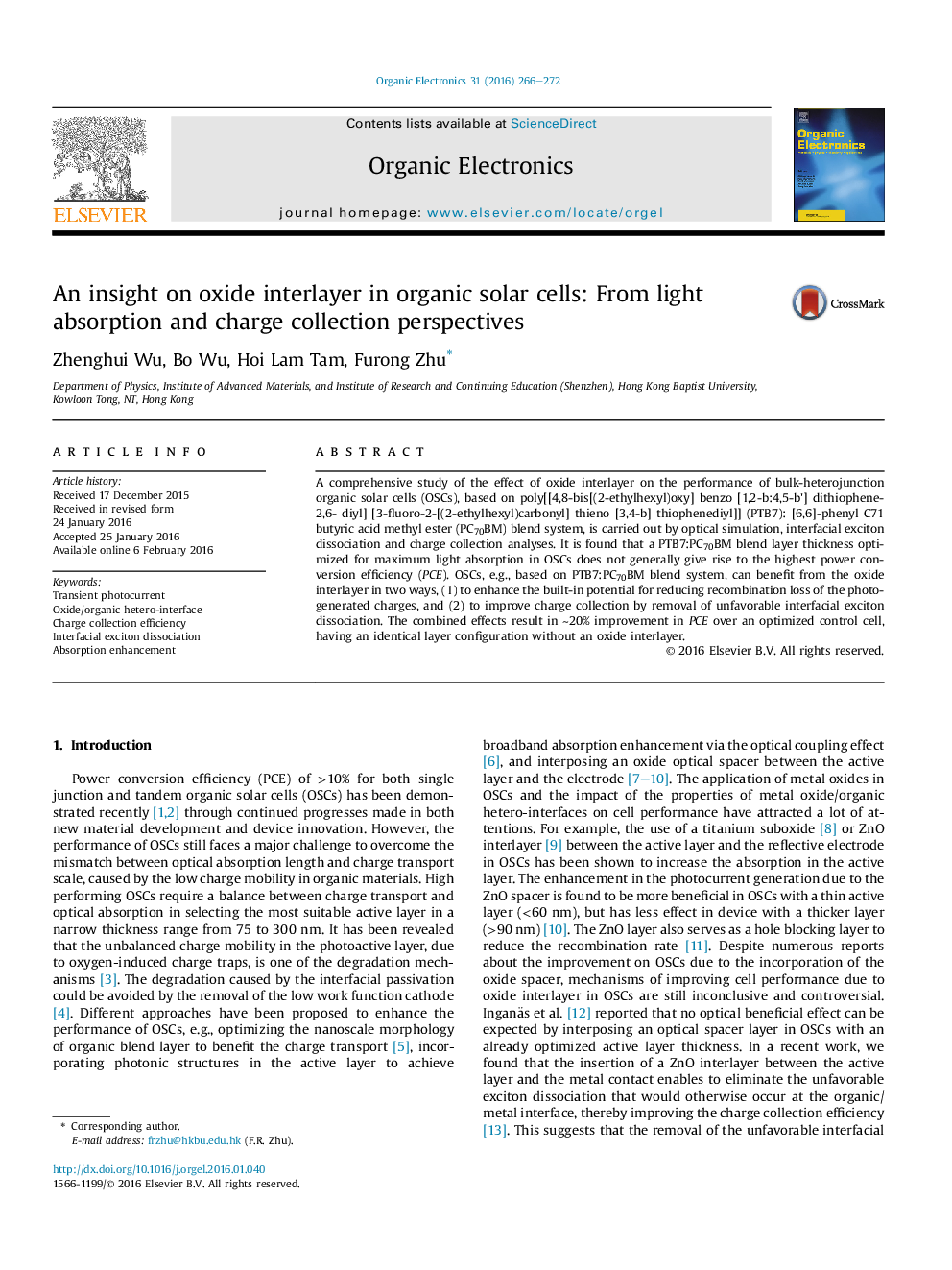| کد مقاله | کد نشریه | سال انتشار | مقاله انگلیسی | نسخه تمام متن |
|---|---|---|---|---|
| 1267057 | 1496826 | 2016 | 7 صفحه PDF | دانلود رایگان |
• A thin oxide buffer layer does not give rise to absorption enhancement in OSCs.
• Oxide interlayer enhances the built-in potential to reduce carrier recombination loss.
• Elimination of exciton dissociation at the organic/metal interface improves charge collection.
A comprehensive study of the effect of oxide interlayer on the performance of bulk-heterojunction organic solar cells (OSCs), based on poly[[4,8-bis[(2-ethylhexyl)oxy] benzo [1,2-b:4,5-b'] dithiophene-2,6- diyl] [3-fluoro-2-[(2-ethylhexyl)carbonyl] thieno [3,4-b] thiophenediyl]] (PTB7): [6,6]-phenyl C71 butyric acid methyl ester (PC70BM) blend system, is carried out by optical simulation, interfacial exciton dissociation and charge collection analyses. It is found that a PTB7:PC70BM blend layer thickness optimized for maximum light absorption in OSCs does not generally give rise to the highest power conversion efficiency (PCE). OSCs, e.g., based on PTB7:PC70BM blend system, can benefit from the oxide interlayer in two ways, (1) to enhance the built-in potential for reducing recombination loss of the photo-generated charges, and (2) to improve charge collection by removal of unfavorable interfacial exciton dissociation. The combined effects result in ∼20% improvement in PCE over an optimized control cell, having an identical layer configuration without an oxide interlayer.
Figure optionsDownload as PowerPoint slide
Journal: Organic Electronics - Volume 31, April 2016, Pages 266–272
